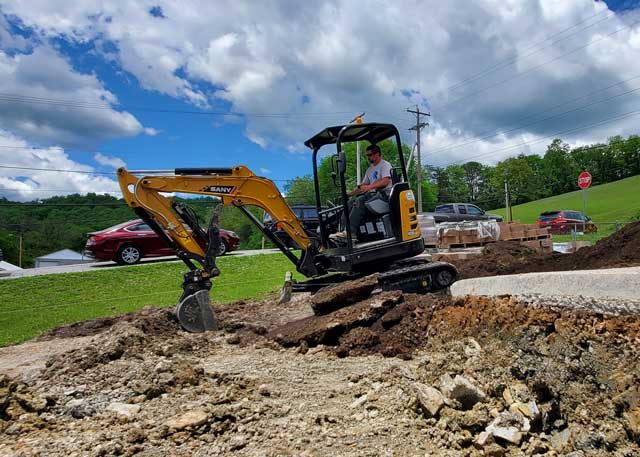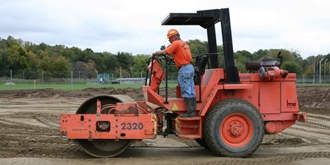Residential Excavating Ohio - Specialized Excavation for Ohio Houses
Residential Excavating Ohio - Specialized Excavation for Ohio Houses
Blog Article
Extensive Expedition: The Science Behind Superior Excavation Practices
From old hand tools to modern hydraulic excavators, the advancement of excavation techniques has actually been a testimony to human ingenuity and technological improvements. What truly establishes premium excavation methods apart is a deep understanding of geological concepts, paired with the usage of sophisticated devices and methodologies.
Evolution of Excavation Methods
Throughout history, the evolution of excavation techniques has played an essential role beforehand construction methods and archaeological discoveries. From the simple tools utilized by our ancestors to the advanced machinery employed in modern times, the progression of excavation techniques has actually significantly changed how we come close to various jobs.
In ancient times, manual work with basic tools such as pickaxes, wheelbarrows, and shovels was the main approach of excavation. This labor-intensive procedure restricted the depth and scope of excavations, usually resulting in slow progression and restricted accessibility to certain sites. As civilizations progressed, so did the tools and methods made use of for excavation.
The Industrial Change noted a transforming point in excavation practices with the introduction of steam-powered machinery. In contemporary times, innovation plays an essential function in excavation, with developments like GPS systems, drones, and 3D scanning improving precision and performance in the area.
Duty of Modern Technology in Excavation

The combination of advanced modern technology has basically transformed the area of excavation, improving accuracy and performance to unmatched degrees. Among the vital technical improvements that has considerably influenced excavation methods is the application of general practitioner systems. These systems permit specific mapping of excavation sites, allowing operators to properly situate underground utilities and frameworks. Additionally, making use of telematics in excavation tools has actually enabled real-time surveillance of equipment performance, leading to positive upkeep and enhanced operational productivity.
Furthermore, the development of 3D modeling and simulation software program has streamlined the planning procedure for excavation projects. Designers and drivers can now imagine the entire excavation procedure prior to beginning, maximizing and determining prospective difficulties process. In combination with this, the execution of drones in excavation tasks has actually helped with airborne studies, volumetric measurements, and website inspections with unmatched speed and accuracy.
Geological Concepts in Excavation
An understanding of geological concepts is important for ensuring the architectural stability and security of excavation websites. Geological aspects play an important function in identifying the usefulness and safety of excavation projects.
In addition, the geological framework of the location, including mistakes, cracks, and rock formations, must be meticulously examined to recognize potential dangers and obstacles. Digging deep into near fault lines or unstable rock developments can lead to instability and potential dangers. By you can check here conducting extensive geological surveys and evaluation, excavators and engineers can create techniques to mitigate dangers and ensure the effective conclusion of excavation projects. Eventually, incorporating geological principles right into excavation practices is critical for achieving secure, click here for more efficient, and sustainable outcomes.

Most Current Tools for Excavation
In the world of excavation techniques, modern technologies in tools have actually transformed the performance and accuracy of excavation processes. These drones can provide in-depth aerial studies of excavation websites, offering real-time information on topography and potential hazards.
One more cutting-edge tool getting appeal is the implementation of 3D printing technology for creating custom-made excavation devices. This permits the production of specialized devices that are tailored to the certain requirements of a task, boosting efficiency and minimizing downtime.
Additionally, developments in materials scientific research have resulted in the growth of stronger and more sturdy excavation devices. lancaster trenching. Tungsten carbide-tipped excavator attachments, for instance, offer superior performance in challenging ground conditions, improving productivity on-site
Scientific research's Influence on Excavation Practices

Furthermore, clinical study on soil technicians and geotechnical engineering has actually provided beneficial understandings right into soil actions, permitting excavation professionals to make educated choices pertaining to excavation methods and soil stabilization techniques. In general, scientific research proceeds to drive technology and enhancement in excavation techniques, making excavation projects much more effective, cost-efficient, and lasting.

Final Thought
In verdict, the evolution of excavation techniques has actually been substantially affected by advancements in modern technology and a much deeper understanding of geological principles. The most current tools and devices used in excavation have actually enhanced performance and accuracy in the area. The application of scientific knowledge has actually significantly enhanced excavation techniques, bring about a lot more effective and lasting approaches for excavating numerous types of materials.
In the realm of excavation methods, modern innovations in tools have actually changed the performance and accuracy of excavation procedures. By leveraging scientific concepts, the excavation industry has been able to dramatically boost performance, accuracy, and safety in excavation procedures. GPR allows excavation teams to non-invasively scan and map subsurface structures, energies, and possible risks, enabling them to prepare excavation projects with better precision and minimized danger of mishaps.
In addition, scientific study on dirt technicians and geotechnical design has actually provided beneficial understandings into soil behavior, allowing excavation specialists to have a peek at this site make educated decisions pertaining to excavation methods and dirt stabilization strategies. In general, scientific research continues to drive advancement and improvement in excavation methods, making excavation projects more effective, cost-efficient, and sustainable.
Report this page